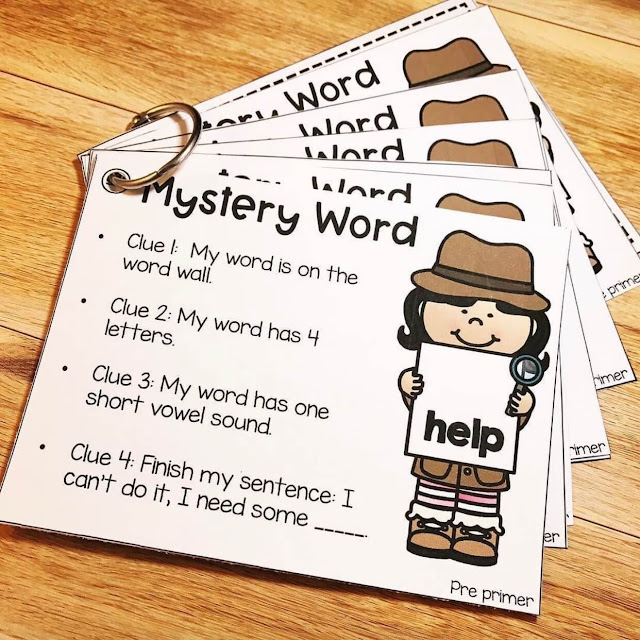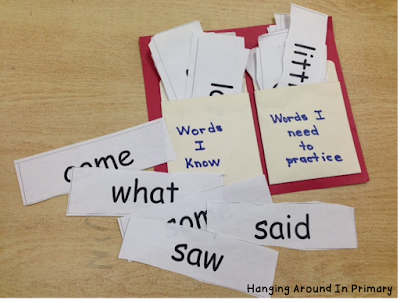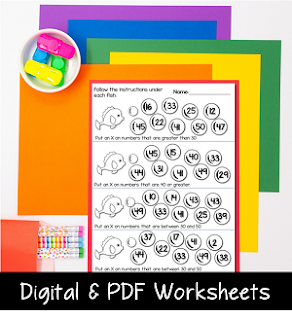Well, you are in the right place. Putting up a word wall in your room is pointless if you don't teach your students how to use it. That requires you to show HOW to use the word wall. In this post, I am going to give you lots of suggestions for using the word wall with your students, which leads to them gaining independence. The best part is that it doesn't have to take a lot of time.
If this is your first time visiting, you may want to start with these posts first. Click on either image to head over to the post.
This post is all about setting up your word wall. It answers questions about getting started. Click on the image to head there.
In this post, I share how I introduce my words and why I think you need to highlight the rule breaker words that you teach.
A Word Wall is just a bulletin board in your classroom unless you actively use it daily and teach your students how to use it.
I am going to share with you some of my favorite ways to provide a daily review of the words with just a few minutes every day.
If you have read any of my previous posts, you might know that I am a bit obsessed with whiteboards. I LOVE them! Practicing our sight words is very important, but I don't need a piece of paper to see what the kids are doing. This is a much better alternative and a win-win for me. Besides, I don't know about your students, but using whiteboards and markers makes everything a lot more fun.
Whiteboard Games to Review
We play several simple games each week to review the words.Find and Print
This is a whiteboard activity I usually do on Tuesday to ensure that my students know where to find the new words on the Word Wall. The words are still in the popcorn bucket, but I ask students to look at the Word Wall instead to find the words.
Once they have had a chance to write the word, one student comes and points to the word with one of my magic reading sticks and the other students all hold up their boards to show their work. If the word is also in the Word Jail, I make sure to have a volunteer show us where it is.
Once they have had a chance to write the word, one student comes and points to the word with one of my magic reading sticks and the other students all hold up their boards to show their work. If the word is also in the Word Jail, I make sure to have a volunteer show us where it is.
To challenge those stronger students early in the year, I have them write a sentence using the sight word. By mid-year, this is the norm for most of the students as a means to practice our weekly words.
Mystery Word
This is a game I sometimes partner the students up to play to ensure that my weaker students don't get overwhelmed and give up.
Each individual or team has a whiteboard and writes the numbers 1 - 4. I give them a series of 4 clues that help them to identify the word I am thinking of. I use the cards below, so I do not have to make things up on the fly!
Each individual or team has a whiteboard and writes the numbers 1 - 4. I give them a series of 4 clues that help them to identify the word I am thinking of. I use the cards below, so I do not have to make things up on the fly!
I love playing this game, and so do my students. It is an excellent activity for a time filler or to leave with a substitute. The mystery word cards make it easy to play anytime. You can check out the series of cards by clicking on the image below.
Talk like a Robot
This is not a whiteboard game, but it is a good one to get them to listen to the sounds in words and practice the phonemic awareness skill of blending sounds together. I say a sight word slowly and enunciate every sound like a robot. Students guess my word and then go and find it on the Word Wall to show everyone.
Partner Practice
I love having my students working together to practice their word wall words, as well. They listen very well to "student" teachers, sometimes better than to me! You can read more about my Word Wall Pockets by clicking on the image below to go to that post.
It Works, It Really Does!
All of these activities require the students to actively use the Word Wall. By playing these simple games, you are teaching students how to find words and how to scan the Word Wall for the words they are looking for. You are training your students to use the Word Wall so that when it is time for them to do some independent writing, they will hopefully use it without prompting.
After years and years of teaching, I know that a Word Wall helps students develop their sight vocabulary, but only if you put in the time and effort to use it.
It also works for my most struggling students. I would often find them standing right in front of the Word Wall looking for a word they needed.
Looking for more ideas that pertain to the Word Wall and word work. Check out my Pinterest board for more ideas.
Head over to the next post to find out how I teach Word Families, a crucial part of my Word Wall and Word Study.
Until next time,




















.png)









Love the idea of Word Jail! My firsties would love it!
ReplyDeleteSusan
Friendly Froggies
Great idea! Thanks for linking up your post with mine toay!
ReplyDeleteThanks for sharing! I used to do a word wall, but it just always seemed like a fail because my students didn't interact with it like they should. Thank you for your great ideas! Maybe I can get a word wall up and running this year!
ReplyDeleteJamie
Follow me @ Life As I Know It
Hi Jamie. Interaction with the word wall is the key. They need ownership over it to buy in and I assure you if you do the things I outlined in this series you will get them to buy in and use it. Good luck this year!
DeleteChristina